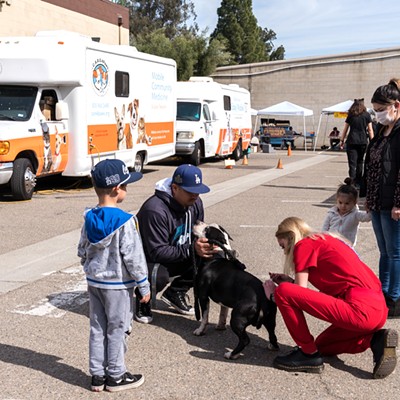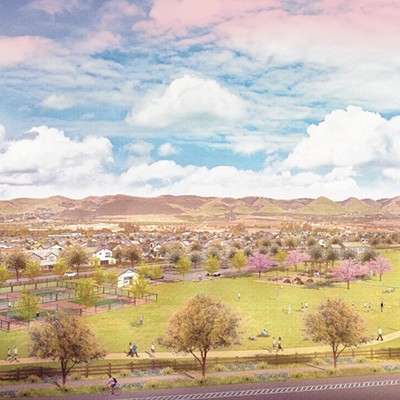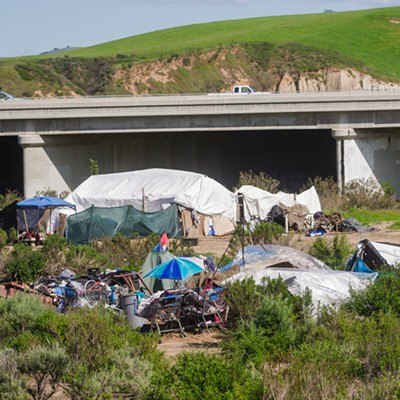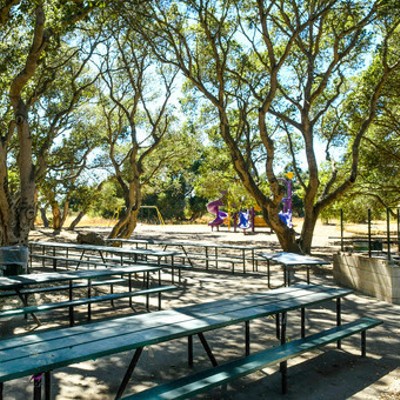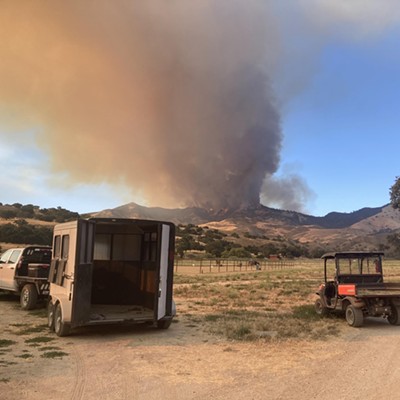The number of people experiencing homelessness in Santa Barbara County hasn’t really fluctuated all that much over the last six years. It’s hovered between 1,900 and 1,800 since 2013, with the latest homeless point-in-time count tallying up 1,803 on one night in January 2019.
While volunteers counted 670 individuals living in emergency shelters or transitional housing, 1,133 persons were experiencing unsheltered homelessness during that count. That’s 240 more than during the 2017 count.
Providing more beds for people who are either experiencing homelessness or are on the verge of becoming homeless is one of the goals the county set for itself in the first phase of the Community Action Plan to Address Homelessness in Santa Barbara County, released in 2018. According to Dinah Lockhart, deputy director of the county’s Housing and Development Division, the key to addressing homelessness is housing.
“At the height of the matter really is the issue of affordable housing, and there really isn’t enough of it for most demographic groups,” Lockhart said. “There are many households that are what they call precariously housed. ... They miss one paycheck and they could become homeless.”
Money coming to the county through state and federal grants is expected to help bridge a portion of the housing gap. In 2018, the county received about $9 million in one-time funding through the state’s Homeless Emergency Aid Program (HEAP), which is meant to help address the homelessness crisis. A little more than half of that was awarded to capital projects—construction of affordable housing. Because one-time funding can’t necessarily be used to provide ongoing services, using those funds for housing makes sense, according to Kimberly Albers, the county’s homeless program manager.
“If you have resources that are one-time, obviously an excellent use for them is to create beds,” Albers said. “When we knew funding was coming, what we heard from the community through the planning process is that to increase the number of beds was critical.”
Simply building housing, though, isn’t enough. Services need to be coupled with that housing in order for it to be successful and keep people housed over the long term.
“Never are we saying that any of these housing projects will just be housing projects. All of these housing projects need intensive services in order to succeed,” Albers said. “It just emphasizes the need for housing and services and not one without the other.”
Housing first
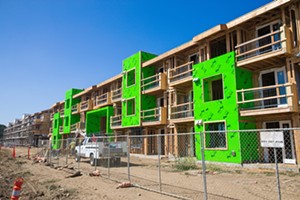
The Housing Authority of the County of Santa Barbara is spearheading two such housing projects in Santa Maria.
One wing of an 80-unit apartment complex called the Residences at Depot Street is nearly finished, while the second 40-unit building is just getting started, according to John Polanskey with the Housing Authority. It should be completed by the first of the year. The West Cox Cottages, which received $1.35 million in HEAP funds and $1.5 million from the state’s No Place Like Home program, is a 30-unit project that’s expected to start construction in 2020.
In 2016, the state enacted the No Place Like Home program to invest in the development of permanent support housing for people in need of mental health services who are experiencing homelessness, are chronically homeless, or are at risk of chronic homelessness. The funding is allocated to supportive housing that’s required to have low barrier tenant selection practices, to prioritize vulnerable populations, and to have individualized support services.
West Cox and the Residences at Depot Street projects were specifically designed for the provision of support services, Polanskey said, and to house the most vulnerable of the homeless population. That includes the chronically homeless, veterans, those with mental health challenges, and/or developmental and physical disabilities.
“Part of each of those funding sources is intended for people to build because if you don’t have any units for people to live in, you can’t provide services for them,” he said. “If you don’t have housing, it’s very difficult providing support services to stabilize and move forward. It’s much more difficult when they are still on the streets, as opposed to when they are still in housing.”
Grant funding received from the state is used to leverage the remainder of what it costs to build projects like these, Polanskey said. Residences at Depot Street will cost about $37 million to build while West Cox Cottages should cost a little less than $10 million. That includes the cost of land and the planning process.
Much of the funding for projects like these comes in the form of low-income tax credits. The Housing Authority applies with either the state or federal government for the credits, which it can then sell to banks or others who have some sort of tax liability they need to write off. It tends to be the last piece of the funding puzzle that falls into place on projects like these, Polanskey said.
“Unless you can fund it, you can’t build it. The money is a big part of it. We know there’s a need and if there’s funding to address it, then you can do something,” Polanskey said. “It’s very difficult otherwise.”
Wrap-around services

Determining who’s eligible for housing such as a unit at the Residences at Depot Street is done through a coordinated entry system, said Emily Allen, the director of homeless and veterans programs with the Northern Santa Barbara County United Way.
The system, also known as Home for Good, was established in 2017, and is a better way to identify and track clients as they move through the system of care—which includes both county and nonprofit service providers. United Way is the lead agency for the system, which Allen said helps match homeless individuals or families who enter the system with housing and support services.
“It does give us a much more accurate picture of how many people are experiencing homelessness, what are their needs,” she said. “It prioritizes people based on vulnerability. ... And that’s how many people are basically matched—maybe they need short-term temporary assistance or this person needs more long-term case management and ongoing support.”
About 2,000 people have been surveyed in the coordinated entry system since it started. Home For Good has identified 758 individuals and families in the county who are in need of permanent supportive housing, such as the soon-to-be West Cox Cottages. The program also identified 739 individuals and families who are in need of rapid rehousing, which could mean a number of things. Some may simply need help securing a deposit for a new rental, while others might need to be connected with services that help them stay in a safe, sheltered place temporarily.
The picture that’s emerged about homelessness in Santa Barbara County hasn’t necessarily changed, Allen said. What Home for Good does is give the county a better way of tracking data over the long term. It collects more quantifiable data that can be shared with elected officials and policymakers to help them make more informed decisions. And it also highlights some of the gaps in county services.
“From my perspective, a lot of this data that we’ve collected, and information, speaks to some of the gaps we have, especially in the supportive services side,” Allen said. “The key is finding the units of housing and pairing the right supportive services with that unit of housing.”
The sort of intensive case management that is necessary to pair with housing the most vulnerable population isn’t something Santa Barbara County really has in place, Allen said. But, given the shift in emphasis from the state and federal governments, which allocate funding based on a housing-first model that wraps support services around it, the county is also shifting its focus.
Allen said that United Way is working to bring in trainers, people with clinical backgrounds, who can help nonprofit and county providers figure out how to be more effective with their services and define best practices. The goal is to make sure that providers can give the right level of supportive services to the people who need it—and that service should cater to each individual, because everyone’s needs are different.
“Training of providers is one piece, identifying providers that can provide that level of intense case management is another piece, and then even the billing, being able to bill MediCal so the program is sustainable,” Allen said. “We want to be able to look at it from a systemwide level, how do we provide this service to the number of people who need it.”
Not enough
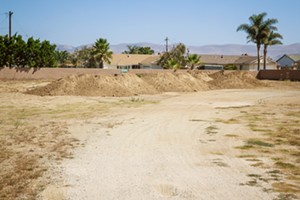
Sylvia Barnard, executive director of the Good Samaritan Shelter in Santa Maria and Lompoc, said although much of the funding coming down from the state and federal levels is targeting the most vulnerable, that only makes up about 10 percent of the homeless population in the county. The other 90 percent also need services, just not as intensely.
Good Samaritan received HEAP funding to provide some of those services through what it’s calling Navigation Centers. Services include rapid rehousing money (for rent or a deposit) and diversion (keeping people housed) for people and families who might not be considered part of the most vulnerable population. Barnard said the services are already being provided in both cities, but they just don’t have a physical space yet.
“It’s kind of like a triage center for homeless individuals and families,” Barnard said.
Good Samaritan also received some HEAP funding to build two small houses in Lompoc for families in need. The majority of the people Good Samaritan serves are homeless families. Barnard said the recent point-in-time count is fairly accurate, and the number of homeless families is highest in North County.
“It also reflects the poverty numbers in North County as well. The majority of poverty is in North County as well,” Barnard said. “It’s pretty consistent.”
Although the money provided through HEAP and No Place Like Home is helping spur construction of units and focus on providing more support services, Barnard said it’s barely touching the surface of the population that organizations like Good Samaritan are serving.
“Nine million dollars sounds like a lot of funding, and it is, but it’s not enough,” Barnard said. “It’s not enough to get us out of the homeless crisis that we’re in in Santa Barbara County right now.”
Santa Maria City Councilmember Mike Cordero, who sits on the board for the United Way, said the benefits that come with housing someone are communitywide. In a way, it’s preventative. If homeless individuals are getting housed, they aren’t necessarily relying on urgent services such as hospital emergency rooms to meet their needs, because those needs are being met before they become emergencies.
“When you house someone, it’s one hand helping the other and you can cut down on thousands and thousands and thousands of dollars in tax money by resolving the homeless issue because they are no longer using the services,” Cordero said. “There’s no one-size-fits-all when you’re dealing with these homeless people. You have to have caseworkers there who can move through the system to make sure that these people are getting cared for. It’s really us caring for our community.”
Reach Editor Camillia Lanham at [email protected].



